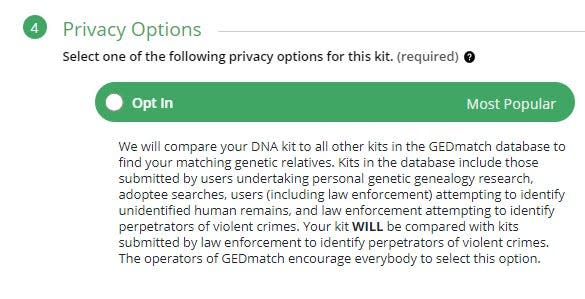Want to upload your DNA to help with genetic genealogy? Here's how.
Genetic genealogists like Amanda Reno use different sources of DNA in their work.
While some of the searching done by genealogists involves databases like CODIS (Combined DNA Index Service), other work uses publicly sourced DNA found online. The genealogist uploads the DNA of a victim or suspect — whomever the investigator is attempting to identify — into the database or website with the hopes of finding familial matches that can help reverse engineer a family tree.
Some websites, like Ancestry.com and 23AndMe do not allow law enforcement to use their databases.

However, those who get DNA test kits from those websites can take their results and upload the DNA onto sites that law enforcement can use. The most often used are GEDmatch.com and FamilyTreeDNA.com.
Both GEDmatch and FamilyTreeDNA require a person uploading DNA to agree to have their sample used in law enforcement searches.
A person does not have to agree to have their sample used in genealogical investigation to upload a sample onto a website, and access can be revoked at any time if the uploader decides to opt in for investigations but later changes their mind.
Columbus police Sgt. Terry McConnell said law enforcement doing searches for family tree matches will contact the email address used to upload the matching DNA so the name used to upload a profile can be false or an alias.
"We respect people’s privacy and we follow the Department of Justice’s guidelines on how to do this," he said.
Columbus police detectives have to do confirmatory testing for any potential match they may find using GEDmatch or FamilyTreeDNA.
How to upload DNA
Go to the genealogy website where your DNA results are located and download the DNA results, usually through an option in the settings menu. The file will download as a .TXT file or Notepad file.
Create a free profile at GEDmatch.com or FamilyTreeDNA.com.
Determine whether DNA should be opted in or allowed for law enforcement searching. This decision can be deferred or changed at a later date.
When prompted, upload the DNA file downloaded as a .TXT file or Notepad file.
Some sites also offer options for uploading or transferring family tree information.
bbruner@dispatch.com
@bethany_bruner
This article originally appeared on The Columbus Dispatch: Want to upload your DNA to help with genetic genealogy? Here's how.
